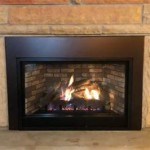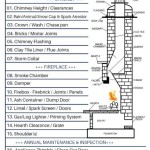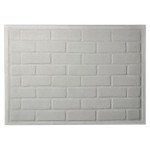Installing Stone Veneer On a Brick Fireplace: A Comprehensive Guide
Updating a brick fireplace with stone veneer is a popular home improvement project that can significantly enhance the aesthetic appeal of a living space. This process involves adhering thin slices of natural or manufactured stone to the existing brick surface, creating a more textured and visually interesting focal point. While it may seem daunting, with careful planning and execution, installing stone veneer on a brick fireplace can be a manageable DIY project. This article provides a detailed guide to the process, outlining the necessary steps and materials to ensure a successful outcome.
Preparing the Brick Surface for Stone Veneer
Proper surface preparation is paramount for the successful adhesion of stone veneer. The existing brick surface must be clean, structurally sound, and properly prepared to receive the mortar bed. Failure to adequately prepare the surface can lead to the veneer detaching over time, compromising the aesthetic and structural integrity of the installation.
The initial step involves thoroughly cleaning the brick. Remove any loose mortar, dirt, dust, soot, or efflorescence using a wire brush and a solution of water and trisodium phosphate (TSP). Power washing can also be utilized, but ensure the brick is completely dry before proceeding. If the brick is painted, the paint must be removed completely. Sandblasting is an effective method for this, although it generates significant dust and requires appropriate safety precautions. Alternatively, a chemical paint stripper designed for masonry surfaces can be employed, following the manufacturer’s instructions carefully.
Once the brick is clean, inspect it for any cracks or structural weaknesses. Repair any damaged areas using a masonry patching compound. Large cracks may necessitate professional repair. The surface of the brick should be relatively even. If there are significant protrusions, they should be removed or ground down to create a flatter surface. This ensures that the stone veneer is properly supported and reduces the risk of unevenness in the finished installation.
Finally, apply a scratch coat of mortar to the brick surface. A scratch coat is a thin layer of mortar that provides a textured surface for the veneer to adhere to. Mix a Type S mortar according to the manufacturer's instructions. The consistency should be similar to that of peanut butter. Apply the mortar evenly to the brick surface using a notched trowel, creating horizontal grooves. Allow the scratch coat to cure for at least 24 hours before proceeding to the next step.
Selecting and Applying the Stone Veneer
The selection of stone veneer is a crucial aspect of the project, significantly impacting the final aesthetic. Stone veneer is available in a wide variety of colors, textures, and sizes, allowing for a customized look. Natural stone veneer offers a unique and authentic appearance, while manufactured stone veneer provides a more consistent and often more affordable option.
Before beginning the installation, dry-lay the stone veneer on the floor in the desired pattern. This allows for adjustments in the arrangement and ensures a visually pleasing result. Consider the placement of larger and smaller stones to create a balanced and natural look. Take note of the cuts that will need to be made to fit the stone veneer around the firebox opening and any other architectural features. A wet saw with a diamond blade is the ideal tool for cutting stone veneer, providing clean and precise cuts.
Apply mortar to the back of each stone veneer piece using a trowel. Ensure that the entire back surface is covered with mortar, creating a strong bond with the scratch coat. Press the stone veneer firmly onto the scratch coat, twisting it slightly to ensure good adhesion. Use shims to support the stone veneer as needed, particularly for larger or heavier pieces. Maintain consistent spacing between the stones to create uniform grout lines. The width of the grout lines will depend on the desired aesthetic, but a common spacing is between ½ inch and 1 inch.
Continue applying the stone veneer, working from the bottom up. Regularly check the level and plumb of the installation to ensure a straight and even finish. Clean off any excess mortar from the face of the stone veneer with a damp sponge or brush as you go. This prevents the mortar from drying and becoming difficult to remove later. Allow the stone veneer to cure for at least 24 hours before proceeding to the next step.
Grouting and Finishing the Stone Veneer Installation
Grouting is an essential step in the stone veneer installation process, filling the gaps between the stones and providing a finished, professional look. The type of grout used should be appropriate for the type of stone veneer and the desired aesthetic. Sanded grout is commonly used for wider grout lines, while unsanded grout is suitable for narrower grout lines.
Mix the grout according to the manufacturer's instructions. The consistency should be similar to that of cake frosting. Apply the grout to the grout lines using a grout bag or a grout float. Ensure that the grout fills the entire depth of the grout lines, eliminating any voids or air pockets. Allow the grout to set for the time recommended by the manufacturer, typically between 15 and 30 minutes.
Once the grout has partially set, use a grout sponge and a bucket of clean water to clean the excess grout from the face of the stone veneer. Rinse the sponge frequently, ensuring that you are not spreading the grout back onto the stones. Shape the grout lines using a grout shaping tool, such as a grout rake or a grout jointer. This creates a consistent and professional-looking finish. Allow the grout to cure completely, following the manufacturer's instructions. This may take several days.
After the grout has fully cured, apply a sealant to the stone veneer to protect it from moisture and staining. Choose a sealant that is specifically designed for stone veneer and follow the manufacturer's instructions carefully. The sealant will help to prevent the stone veneer from absorbing water and dirt, extending its lifespan and maintaining its aesthetic appeal. Inspect the completed installation for any imperfections, such as loose stones or cracked grout. Repair any damaged areas as needed to ensure a long-lasting and visually appealing result.

Installing Stone Veneer Over A Brick Fireplace Grand River

Installing Stone Veneer Over A Brick Fireplace Grand River

Stone Veneer Over A Brick Fireplace Updates The Look

Can You Put Stone Veneer Over Brick

How To Install Thin Brick Veneers On Your Fireplace

Stone Veneer Over A Brick Fireplace Updates The Look

Transform Your Home Stone Veneer Over Brick Fireplace Guide

Chicago Stone Veneer Manufactured Siding Brick Fireplace Makeover

Stone Veneer Over A Brick Fireplace Updates The Look

Thin Stone Veneers Make A Fireplace Update Easy Swenson Granite 100 Natural Stones
Related Posts








